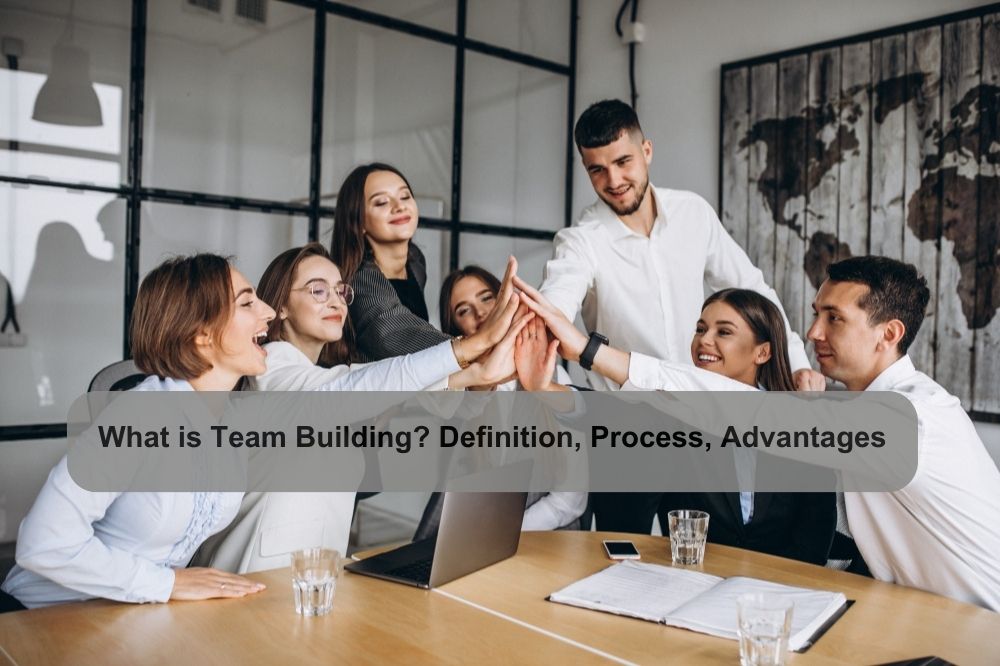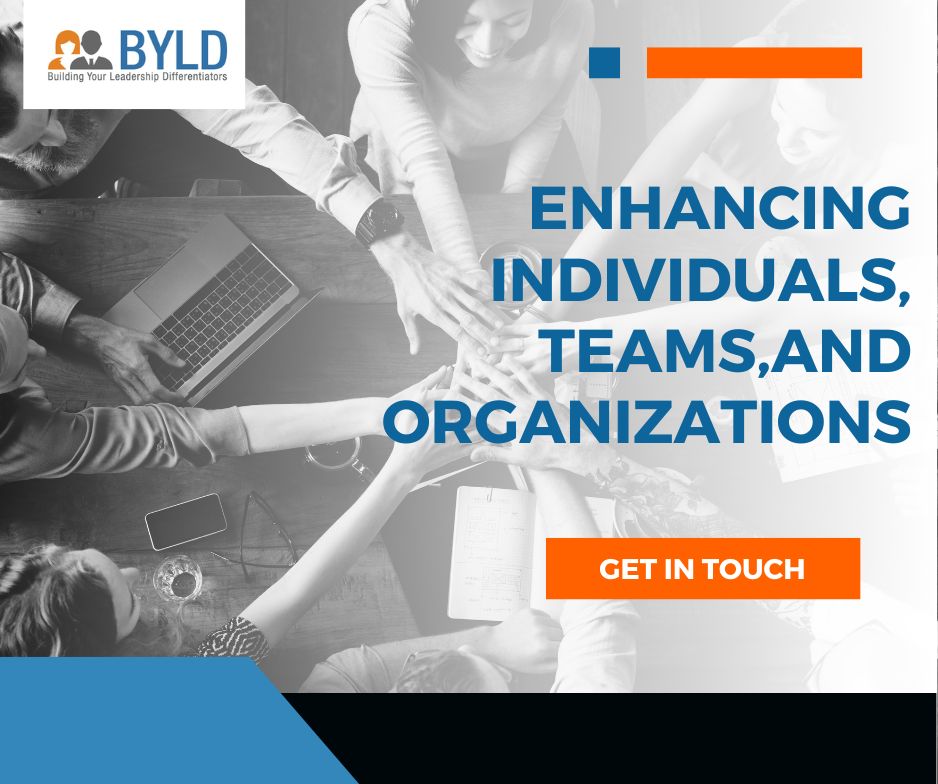
What is Team Building? Definition, Process, Advantages
- June 18, 2025

Introduction
In the modern, fast-changing business environment, the success of every organization totally depends on the effectiveness and cohesion of its team members.The team building process plays a crucial role in enhancing cooperation, boosting employee morale, and achieving common goals. Team building’s motive is not just to bring employees together; it is more about creating a collaborative workplace environment in the organizations so that employees feel valued and respected. Whether it might be structured exercises, professional development initiatives, or any social communication, team building process fosters effective communication and trust among the team members.
In this blog post, readers will learn the exact meaning of team building, its various types, step-by-step team building process, advantages and challenges, and insights from leading organizations like Google to understand how it shapes a productive workplace.
What is Team Building?
Team Building is a business term “ refers to the everyday interaction between employees in the workplace who collaborate to achieve their work goals. Team Building process automatically gain strength when a group of employees established clear team norms, that helps in guding respectful and prodcutive communication within the team and across the organization as well.
One powerful way to create these norms is through the involvement of structured activities and exercises. As an alternative, managers might look for external facilitation to enhance the team building process, feasible within the budget and goals. Skilled facilitators can significantly elevate this journey. Thus, building a team helps in creating relationships that helps in completing the organization task effectively on time. Regardless of the strategy used, focus on creating possibilities that enhance the team’s work to guarantee effective team building.
To facilitate sessions, the marketing team can easily appoint an employee. Additionally, team leaders can also organize meetings where employees develop collaborate bonds. Thus, meetings or facilitated sessions are the tools necessary for team building. Team building process is also promoted by planning fun events and organizing activities for team members to take part in together. Team unity and motivation can also be increased by regularly sending inspirational emails to your employees or by hanging posters with quotes about teamwork.
The goal of the strategic team building process is to create a cohesive group of people who are working toward common goals. It is important for building solid relationships that greatly help companies and organizations. Better communication, planning skills, employee engagement, and cooperative efforts are all results of effective team building process.
Team members are encouraged to see one another differently via enjoyable activities, which prompts them to think about the ramifications of their experiences in the workplace. The ultimate goal of team development is to produce measurable outcomes. Teams learn how to communicate effectively, plan, solve problems, and resolve conflicts via well-organized, entertaining team building process activities. These exercises promote sincere relationships, in-depth conversations, and long-term team building.
Skilled managers play a key role in the team building process, helping to create exceptional teams. They know their team members’ strengths and weaknesses to achieve an overall blend of different skill sets. Managers build trust and strong interpersonal relationships among their team members. Thus, crucial aspects include encouraging open communication and lowering stress levels through different team-building exercises. The team is effectively guided toward accomplishing shared objectives when organizational goals and individual roles are clearly defined through a structured team building process.
Types of Team Building: Enhancing Collaboration
1. Activity-Based Team Building:
- Physical Activities: Keeping your employees physically healthy is crucial by providing them with activities that will take their minds off their busy workdays. Managers use physical activities like golf, kickball, and others to foster pleasant rivalry and collaboration.
- Intellectual Activities: Exercises such as Brain Teasers and escape rooms push employees to think strategically, which promotes cooperation and problem-solving skills.
2. Skill-Based Team Building:
It involves focusing on helping your team members acquire specific skills that are related to their performance. . Examples include sales, leadership, negotiation, conflict management training, and personality-based training, helping all employee’s to work more effectively together.
3. Value-Based Team Building:
Align team building with corporate social responsibility initiatives, fostering philanthropy. Activities may involve giving back to the community, such as cooking at a local shelter, running a charity drive, or building and donating bicycles.
4. Team Bonding:
Provide opportunities for relaxation and personal connection. Team bonding experiences, often more informal and fun, strengthen working relationships. Consider outings to restaurants, local bars, or even karaoke sessions to unwind and reveal hidden talents within the team.
In the hectic world of today, finding a balance between these diverse team-building techniques guarantees that your group not only works well together but also develops close relationships with one another, which promotes a supportive and harmonious workplace.
10 Effective Team Building Process: A Progressive Approach
Team building is not an isolated event but a meticulous process designed to instigate positive changes within an organization. Typically, teams are assembled for specific projects, often of short-term duration. The success of this process lies in a series of well-defined steps:
1. Identify the Need for Team Building:
Analyze the organizational requirements and tasks, understanding the purpose, required skills, and complexity before team formation.
2. Define Objectives and Required Skills:
Clearly outline organizational objectives and the necessary skill set to accomplish them.
3. Consider Team Roles:
Evaluate individual interactions, roles, responsibilities, strengths, weaknesses, and the suitability of potential team members.
4. Determine a Team Building Strategy:
Understand the operational framework, ensuring clarity on objectives, roles, responsibilities, duration, resource availability, training, information flow, feedback, and trust-building within the team.
5. Develop a Team of Individuals:
Assemble individuals to form a cohesive team, ensuring each member is familiar with their roles and responsibilities.
6. Establish and Communicate the Rules:
Communication is a crucial part of team work. Effectively communicating teams are more productive and spend less time. Quicksand concise responses from teams helps in increase turnaround time. When an employee are able to communicate a concept, with their other teammates they may follow directions without asking questions. Since employees are less prone to misunderstand or misinterpret clear signals, having good conversational skills also reduces conflict.
Thus to establish and communicate the rules, related to reporting, meeting schedules, and decision-making, fostering open and healthy communication within the team is very important.
7. Identify Individual Strengths:
Conduct team-building exercises to bring out individual strengths, fostering awareness among team members regarding each other’s capabilities.
8. Be a Part of the Team:
Engage with the team as a member, emphasizing the importance of each individual. Present yourself as a team leader, mentor, and role model.
9. Monitor Performance:
Regularly evaluate the team’s productivity, identifying areas for improvement and reasons behind any shortcomings.
10. Schedule Meetings:
Conduct purposeful meetings to discuss team performance, address challenges, and plan future actions.
Discover 12 Advantages of Team Building
Embarking on successful team-building initiatives can significantly boost your business’s bottom line. The activation of positive professional relationships leads to a more motivated, engaged, and productive team.
Team building has undergone a transformative evolution, emerging as a vital technique for cultivating and sustaining effective workplace teams. The necessity to align efforts with long-term organizational objectives has given rise to the frequent implementation of team-building activities.
Fostering a close-knit team is instrumental in ensuring productivity and fostering a positive work environment.
Here are some compelling reasons to initiate team building activities: inspire and unify your team members, fostering camaraderie even in a virtual workplace setting!
1. Networking, Socializing, and Relationship Building:
- Foster connections by providing opportunities for team members to socialize.
- Cultivate workplace friendships to enhance productivity in virtual, hybrid, or in-person settings.
- Team bonding offers a variety of virtual team-building activities for a fun and engaging experience.
2. Teamwork and Performance Boost:
- Improve teamwork and collaboration through team-building activities like Virtual Team Building Activities.
- Learn more about the strengths, weaknesses, and interests of your team members through team-building exercises.
- Set the tone for a positive work culture where each member contributes their best.
3. Competition and Bragging Rights:
- Harness the power of competition to increase productivity.
- Use team-building games and competitions to promote bonding and motivation.
- Incentivize teams with the prospect of winning, fostering collaboration.
4. Celebration, Team Spirit, Fun, and Motivation:
- Celebrate achievements and have fun to motivate teams.
- Create an atmosphere of camaraderie and enjoyment.
- Elevate team motivation by incorporating celebratory elements into events.
5. Collaboration and Fostering Innovation:
- Encourage creativity by creating a comfortable environment.
- Team building contributes to a more successful and innovative workplace.
- Facilitate everyday collaboration for a successful business.
6. Communication and Improved Collaboration:
- Enhance communication by focusing on team building.
- Address specific communication areas through targeted activities.
- Improve trust and communication dynamics among team members.
7. Enhance Company Culture:
- Improve company culture through regular team-building events.
- Understand employees’ preferences and align them with organizational goals.
- Create a positive work environment by eliminating toxicity.
8. Create Something to Look Forward To:
- Schedule team-building activities to give employees something exciting to anticipate.
- Break the monotony of work-related tasks with enjoyable events.
- Boost employee morale by offering non-work-related events during the workweek.
9. Show Employees Appreciation:
- Demonstrate appreciation for employees’ hard work through team-building activities.
- Prioritize events to reward and acknowledge employees.
- Highlight the importance of their contributions to the team’s success.
10. Build Bridges Across Departments:
- Encourage collaboration across different departments.
- Break down silos and promote cross-functional collaboration.
- Strengthen the unity of all working teams within the organization.
11. Unlock Leadership Potential:
- Identify hidden skills and leadership potential in a relaxed environment.
- Recognize emerging leaders during team-building activities.
- Foster confidence and provide mentorship opportunities for potential leaders.
12. Improved Employee Engagement and Morale:
- Build camaraderie and excitement among employees.
- Encourage a positive workplace by making work enjoyable.
- Enhance employee engagement, enthusiasm, and comfort in the workplace.
6 Challenges in Team Building Endeavors:
Crafting a high-performance team to achieve organizational goals is a challenging feat. While a well-orchestrated team can propel success, an ineffective one may result in the squandering of valuable time and corporate resources. It’s essential to acknowledge that the journey of team building skills comes with its share of challenges and potential drawbacks., which are as follows:
1. Conflict Development: Occasionally, team members may face challenges in coordination and understanding, resulting in conflicts that hinder efficiency and productivity. Managing such conflicts consumes valuable time and resources.
2. Unproductive Team Members: Some individuals within a team may contribute minimally, being perceived as free-riders. Their lack of efficiency and productivity can impede overall team performance.
3. Potential Non-Cooperation: Differences among team members can lead to a lack of cooperation and unity. This non-cooperation results in wasted efforts and can hinder the team’s overall performance.
4. Evaluation Complexity: Assessing individual contributions becomes challenging, as the organization often focuses on the team’s collective achievement or failure, overlooking individual efforts during recognition.
5. Resource Investment: Team Building Activities demand time and financial resources. The coordination, balance, feedback, decision-making, and conflict management involved in team formation require substantial time, cost, and resources.
6. Accountability and Credibility Issues: In the event of failure, determining accountability becomes difficult, with team members sometimes avoiding responsibility for unfavorable outcomes. Conversely, success may lead to individual members claiming credit only after acknowledging the collective efforts of the entire team.
Illustrative Example - Google's Insights:
According to a Google study on successful team building, creating an atmosphere where people with similar interests appreciate one another’s viewpoints is crucial. The mix of extroverts and introverts didn’t significantly contribute to team success. Instead, high-performance teams emerged when individuals with similar mindsets provided equal opportunities for expressing ideas and actively listened to one another.
Conclusion
Team building is a dynamic and continuous process that strengthens collaboration, fosters trust, and drives organizational success. Whether through structured activities, value-based initiatives, or informal bonding, the goal is the same: to create a cohesive team aligned toward shared objectives.
The strategic steps involved in team building, from identifying the need to monitoring performance, underscore the importance of clear objectives, effective communication, and individual strengths. It’s a journey led by managers skilled in understanding team dynamics, fostering interpersonal relationships, and encouraging open communication.
While team building comes with its challenges, the benefits are numerous. From improved communication and collaboration to enhanced company culture and employee engagement, the positive impact reverberates throughout the organization. The variety of team-building activities, from socializing and competition to celebrating achievements, creates a vibrant and motivated work environment.
Google’s insights further emphasize the significance of creating an inclusive environment where individuals, regardless of their personality types, feel respected and valued. Like-mindedness, mutual respect, and equal opportunities for expression are key elements in fostering high-performance teams.
In essence, team building is not just a one-time event but a continuous journey toward achieving shared goals and building a workplace culture that thrives on collaboration, innovation, and mutual support.
FAQs Related to Team Building
Define team building and why it is beneficial for every organizations to have.
Team building is a vital process that involves daily communication between employees, structured execrises, and strategic steps aimed at creating strong bonds amomg the employees. Team building is very benefical for for every organization because it ehance employee communication, collaboration, and overall team performanece, leading to enhanced productvity and a pleasant work culture.
Name the different types of team-building activities.
Activity-based (physical and intellectual activities), skill-based (focused on developing particular skills), value-based (aligned with corporate social responsibility), team-bonding (fun and informal experiences), and networking/socializing events are some of the different types of team-building activities. Each category serves different requirements and goals.
How can managers guide the process of team-building effectively?
Managers play an important role in team development by identifying the need for team building, establishing objectives and required competences, thinking about team roles, selecting a team-building strategy, organizing a team, and developing communication standards. Their participation, guidance, and emphasis on human connections all help the team-building activity succeed.
What are the potential challenges in team building?
Challenges in team building include:
- The development of conflicts among team members.
- The presence of unproductive or freeriding team members.
- Non-cooperation within the team.
- Complexity in evaluating individual performance.
- The investment of time and resources.
- Accountability and credibility issues.
Overcoming these challenges requires effective management and a strategic approach.
How do team-building activities contribute to improved company culture?
Regular team-building events contribute to improved company culture by aligning employees' preferences with organizational goals, creating a positive work environment, eliminating workplace toxicity, and providing a space for understanding employees' wants and needs. This, in turn, enhances the overall workplace culture and employee satisfaction.
Can virtual teams benefit from team building?
Yes, absolutely. Virtual team-building activities like online games, virtual coffee chats, or collaborative workshops help remote teams build rapport, stay connected, and work efficiently despite remotely working.
What are low-cost team-building ideas?
Some budget-friendly ideas include potluck lunches, team trivia games, group volunteering, storytelling sessions, or organizing simple in-house challenges.
What’s the difference between team bonding and team building?
Team bonding focuses on strengthening personal relationships and having fun, while team building is more structured and designed to develop work-related skills and collaboration.
Are there risks involved in team building?
Yes, potential risks include conflict, time investment without clear outcomes, or activities that feel forced or irrelevant. Proper planning and aligning activities with team needs can mitigate these challenges.
Can team-building activities help identify leadership potential?
Yes. Activities that involve delegation, problem-solving, or leading a group can reveal individuals with strong leadership qualities or hidden potential.
How can I make team-building activities more inclusive?
Ensure activities accommodate different personalities, physical abilities, and cultural backgrounds. Choose a variety of activities, allow voluntary participation, and be mindful of everyone's comfort level.







